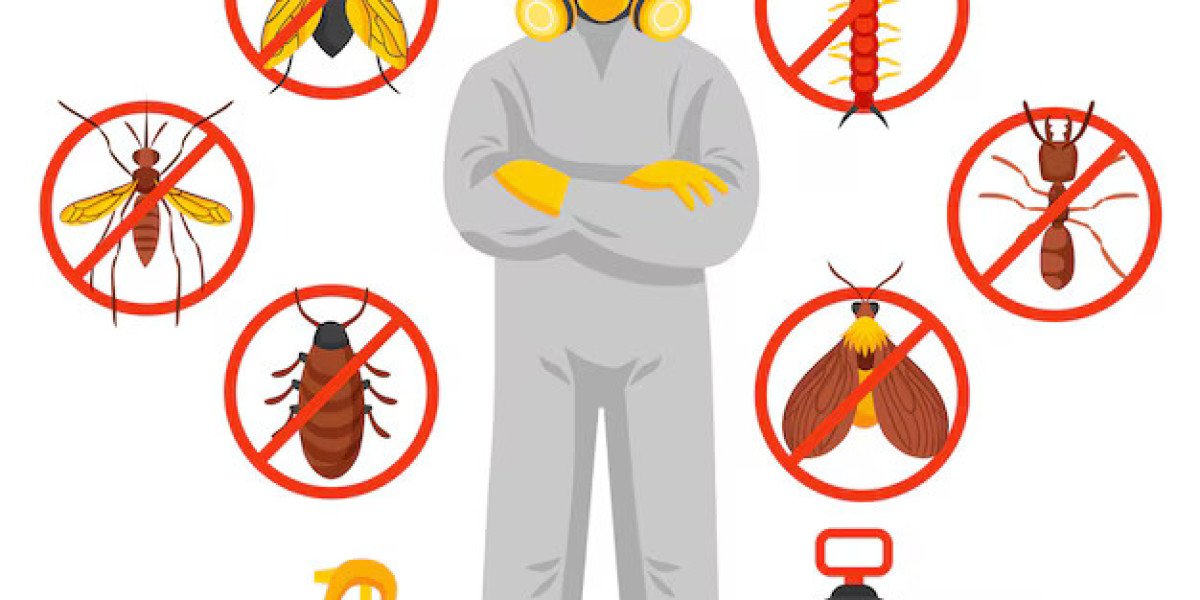Pests can be a significant nuisance in and around the home, causing damage to property, food, and sometimes even posing health risks. While conventional pest control methods often rely on toxic chemicals that may harm people, pets, and the environment, eco-friendly alternatives are becoming increasingly popular. These methods not only keep pests at bay but also ensure that your home and garden remain safe and healthy. By using natural solutions, you can eliminate pests without compromising the environment. Below are five highly effective and eco-friendly pest control methods that can help prevent and manage pest infestations.
1. Natural Repellents
One of the easiest and safest ways to repel pests is by using natural repellents. Essential oils are a fantastic solution, as they are effective against various pests and come with the added benefit of being completely safe for humans and pets when used correctly. The oils from plants like peppermint, citronella, eucalyptus, and lavender are known for their pest-repellent properties. These oils can drive away mosquitoes, ants, spiders, and even rodents.
How to Use Natural Repellents:
To create a natural repellent spray, dilute essential oils with water. A typical recipe involves mixing 10-20 drops of essential oil in a small spray bottle filled with water. You can also add a bit of rubbing alcohol or witch hazel to help the oils blend better. Spray the mixture in areas where pests are a problem, such as doorways, windows, kitchens, and other areas where pests are likely to enter.
- Peppermint Oil: Known for its ability to repel ants, spiders, and rodents. It also has a refreshing scent that can be pleasant in your home.
- Citronella Oil: Most commonly used to keep mosquitoes away, citronella oil is ideal for outdoor spaces like patios and gardens.
- Eucalyptus Oil: This oil can deter mosquitoes and flies, making it perfect for keeping your indoor spaces pest-free.
- Lavender Oil: Lavender is a natural insect repellent, particularly effective against moths, fleas, and mosquitoes, and is also known for its calming aroma.
Natural repellents can be safely used indoors and outdoors, making them versatile and effective tools in the fight against pests.
2. Diatomaceous Earth
Diatomaceous earth (DE) is a natural substance made from the fossilized remains of diatoms, which are tiny aquatic organisms. This fine powder is non-toxic to humans and animals but deadly to insects. When insects come into contact with diatomaceous earth, it dehydrates them by damaging their exoskeletons. The insects eventually die due to water loss. DE is particularly effective for crawling insects, such as ants, bedbugs, fleas, and cockroaches.
How to Use Diatomaceous Earth:
- Sprinkle in Problem Areas: Sprinkle food-grade diatomaceous earth in areas where pests are commonly seen. Focus on places like cracks in walls, along baseboards, under appliances, and around the perimeter of your home.
- Use in Gardens: DE can be used outdoors to control pests in gardens. It is safe for plants but deadly to insects like aphids, snails, and beetles.
- Apply with Caution: While DE is safe for pets and children, you should still avoid inhaling the fine powder. Wear a mask when applying it, and avoid applying it directly onto pets or in areas where they might inhale it.
Diatomaceous earth is a natural, eco-friendly solution that targets a wide range of pests and is especially beneficial for homeowners looking to avoid chemical treatments.
3. Biological Pest Control
Biological pest control involves introducing natural predators into your environment to control pest populations. This method harnesses the power of nature to maintain a balance in your ecosystem, reducing the need for harmful pesticides. For instance, ladybugs are excellent for controlling aphids in gardens, while nematodes target soil-dwelling insect larvae like fleas and grubs.
How to Use Biological Pest Control:
- Ladybugs for Aphid Control: Ladybugs are natural predators of aphids, which are common pests that damage plants. By introducing ladybugs to your garden, you can significantly reduce aphid populations.
- Nematodes for Soil Insects: Nematodes are microscopic worms that can be introduced to your soil to target pests like grubs, fleas, and root weevils. They work by infecting and killing the pests without harming beneficial insects.
- Praying Mantises for Insect Control: Praying mantises are voracious predators that will consume a wide variety of pests, including mosquitoes, flies, and caterpillars. They can be released into garden spaces to help keep pest populations in check.
- Predatory Mites for Spider Mites: If your garden is suffering from spider mites, you can introduce predatory mites, which feed on these harmful pests and help maintain a balanced ecosystem in your garden.
Using beneficial insects is an excellent way to keep your home and garden free from pests without using synthetic chemicals. Not only do these predators help control pests, but they also promote biodiversity and ecological balance.
4. Neem Oil
Neem oil is derived from the seeds of the neem tree, and it has long been used in natural pest control for its wide-ranging insecticidal properties. Neem oil works by disrupting the feeding and reproductive cycles of pests, ultimately causing them to starve or die off. It is effective against a wide variety of insects, including aphids, whiteflies, spider mites, and caterpillars.
How to Use Neem Oil:
- Spray on Plants: Neem oil is commonly used in gardens to treat infestations of insects like aphids, mealybugs, and scale. Simply mix neem oil with water (follow label instructions) and spray it on the affected plants. Be sure to cover both the tops and bottoms of leaves.
- Soil Treatment: Neem oil can also be used as a soil drench to target pests in the soil, such as root-feeding nematodes.
- For Indoor Use: Neem oil can be used indoors to control pests like bedbugs and cockroaches. It is safe to use around pets and children when applied correctly.
Neem oil is a natural and effective alternative to chemical pesticides, and it is safe to use on plants, around pets, and in areas where children play. Its versatility makes it a must-have in any eco-friendly pest control strategy.
5. Habitat Modification
Habitat modification involves changing your home environment to make it less attractive to pests. By eliminating conditions that are conducive to pest breeding and survival, you can significantly reduce the chances of infestations. Pests often enter homes because of the shelter, food, and moisture they find indoors. By removing these factors, you can deter pests from making your home their habitat.
How to Modify Your Habitat:
- Seal Cracks and Gaps: Inspect your home for any cracks, gaps, or holes in walls, doors, windows, and foundations. Seal these entry points to prevent pests from entering.
- Control Moisture: Many pests are drawn to damp environments, so make sure to fix any leaks in pipes, faucets, or appliances. Dry wet sponges, mops, and towels thoroughly after use.
- Proper Food Storage: Store food in airtight containers to prevent attracting pests. Regularly clean countertops and floors to remove food scraps and crumbs.
- Proper Waste Management: Take out the trash regularly, especially organic waste, and make sure trash bins are tightly sealed.
By implementing habitat modifications, you can make your home much less inviting to pests, significantly reducing the need for other pest control methods.
Conclusion
Eco-friendly pest control methods provide an effective, safe, and sustainable way to manage pest problems in and around your home. By using natural repellents, diatomaceous earth, biological pest control, neem oil, and habitat modifications, you can keep your living space free of pests while protecting the environment. These methods not only help eliminate pests but also promote a healthier living environment for you, your family, and the planet. Whether you're dealing with a minor issue or a more significant infestation, these eco-friendly solutions can be combined to provide lasting pest control without relying on harsh chemicals.






